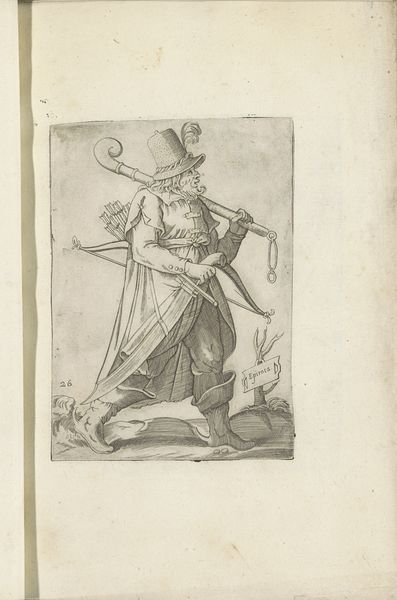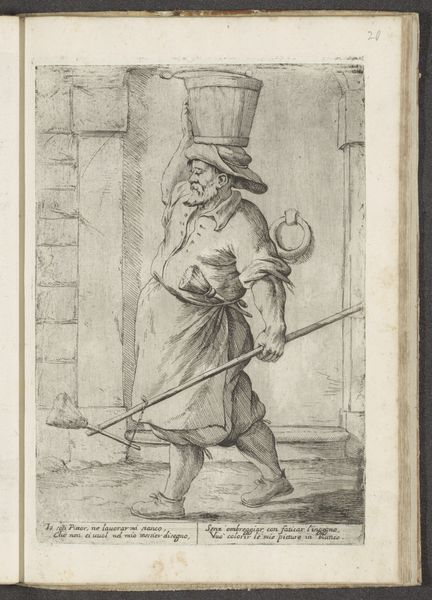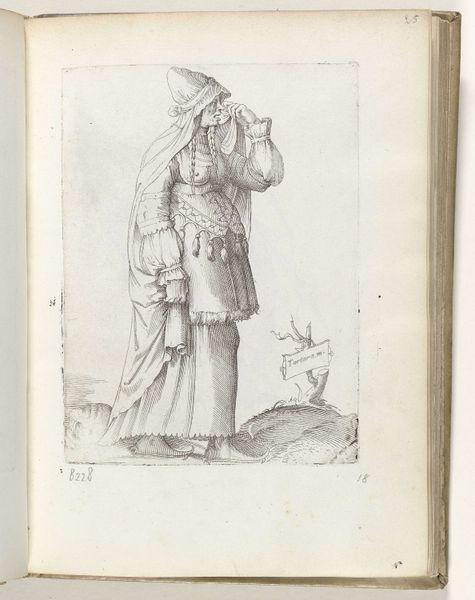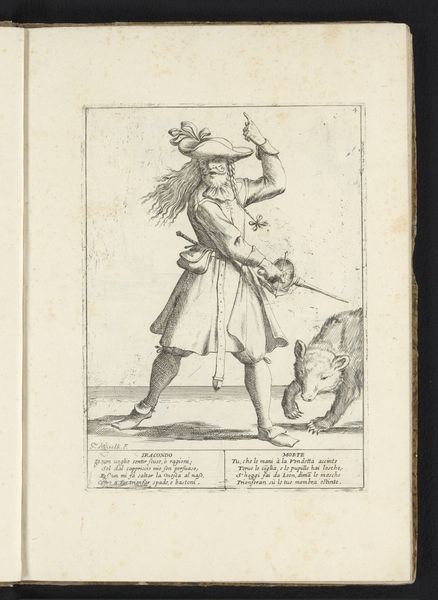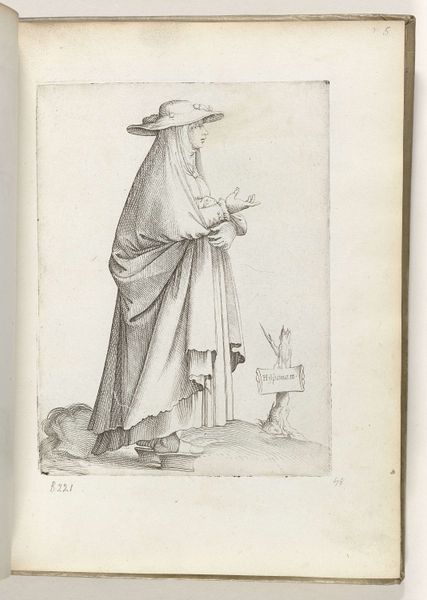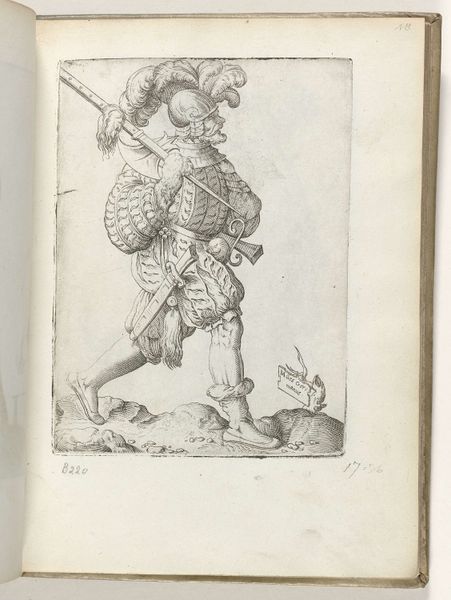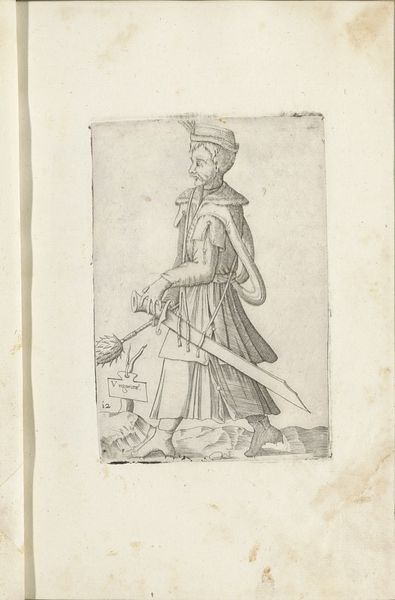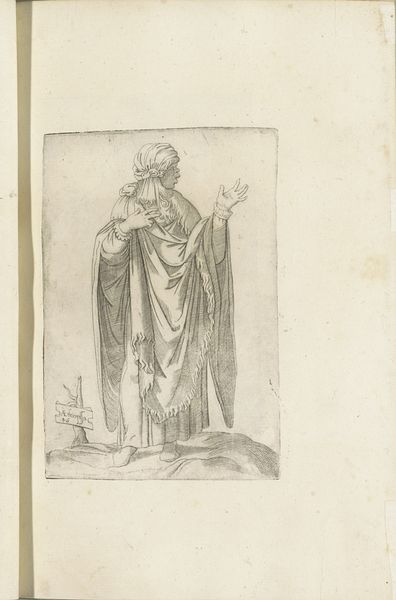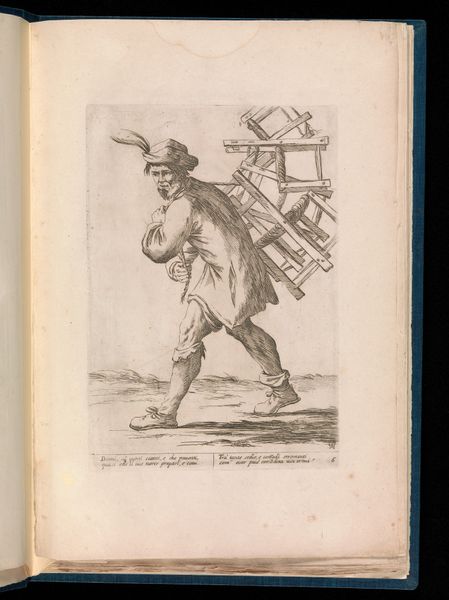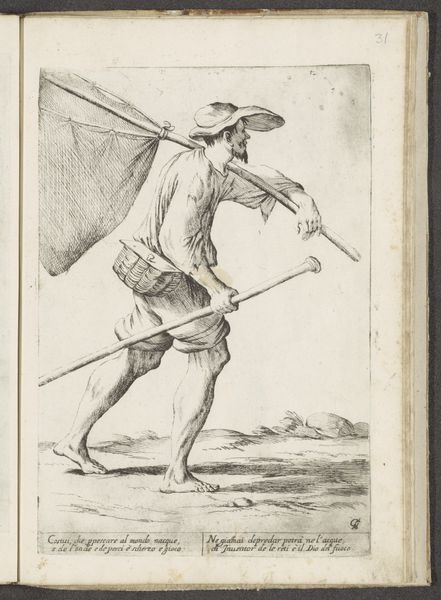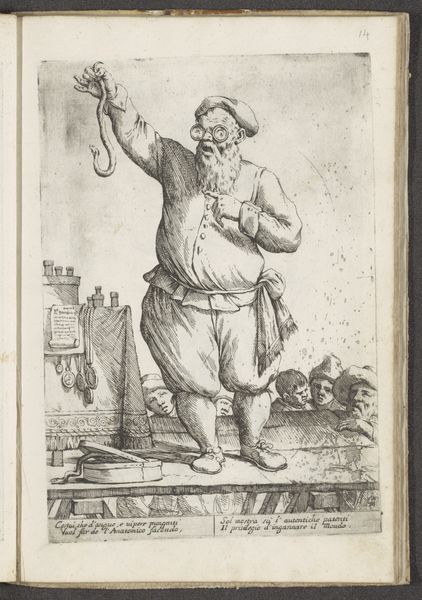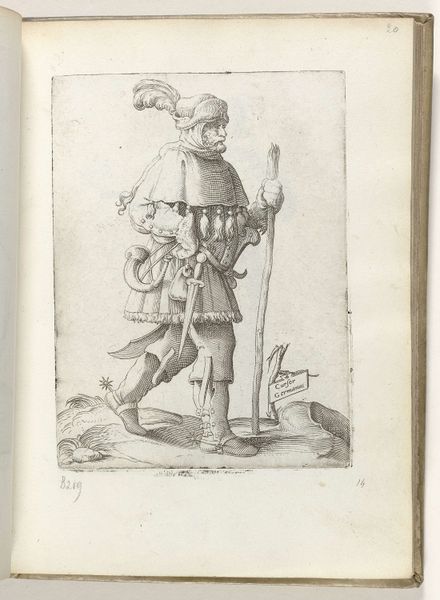
drawing, print, paper, ink, engraving
#
portrait
#
drawing
# print
#
mannerism
#
figuration
#
paper
#
ink
#
engraving
Dimensions: height 150 mm, width 92 mm
Copyright: Rijks Museum: Open Domain
Enea Vico created this engraving titled ‘Epirota’ sometime in the mid-16th century. The image depicts a soldier from Epirus, a region in the Balkans, but it also tells us a great deal about the culture and institutions of the Italian Renaissance in which it was made. Visual codes play a crucial role. The figure’s weapons and clothing evoke a martial identity, but the print also creates meaning through historical associations. Epirus was part of the Ottoman Empire at this time, which may have influenced the artist’s decision to depict the soldier. It may also offer a commentary on the political struggles of the time. Historians of art can shed light on these questions by researching the artist's biography, as well as the history of cartography, costume, and military technology. Ultimately, the meaning of this image is contingent on the social and institutional contexts in which it was made and viewed.
Comments
No comments
Be the first to comment and join the conversation on the ultimate creative platform.
